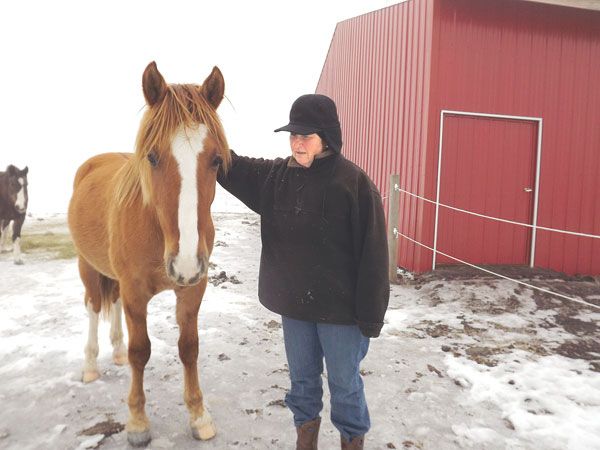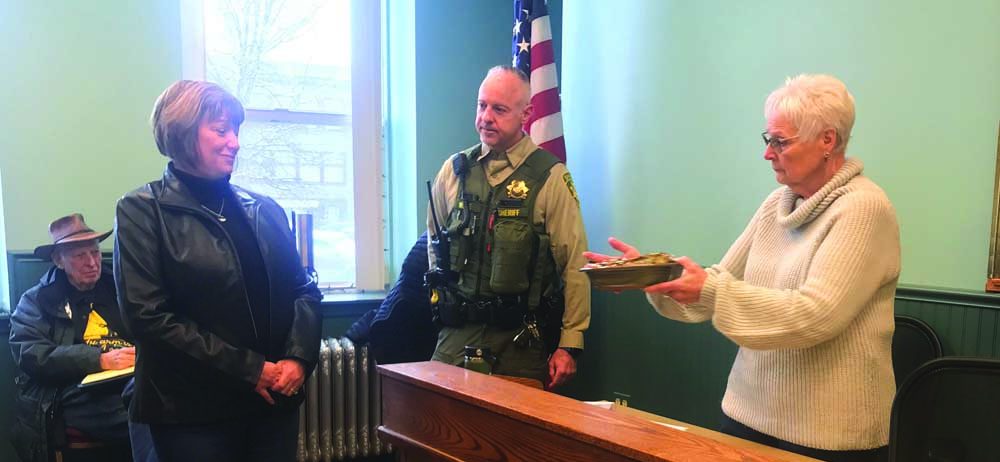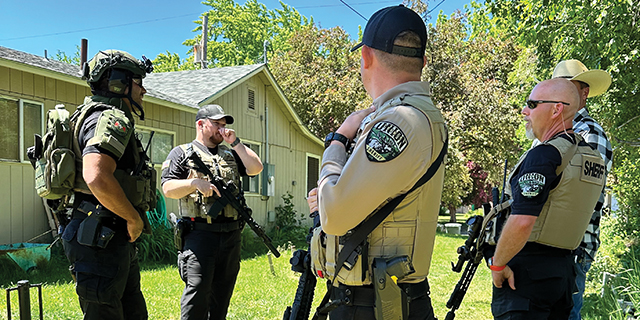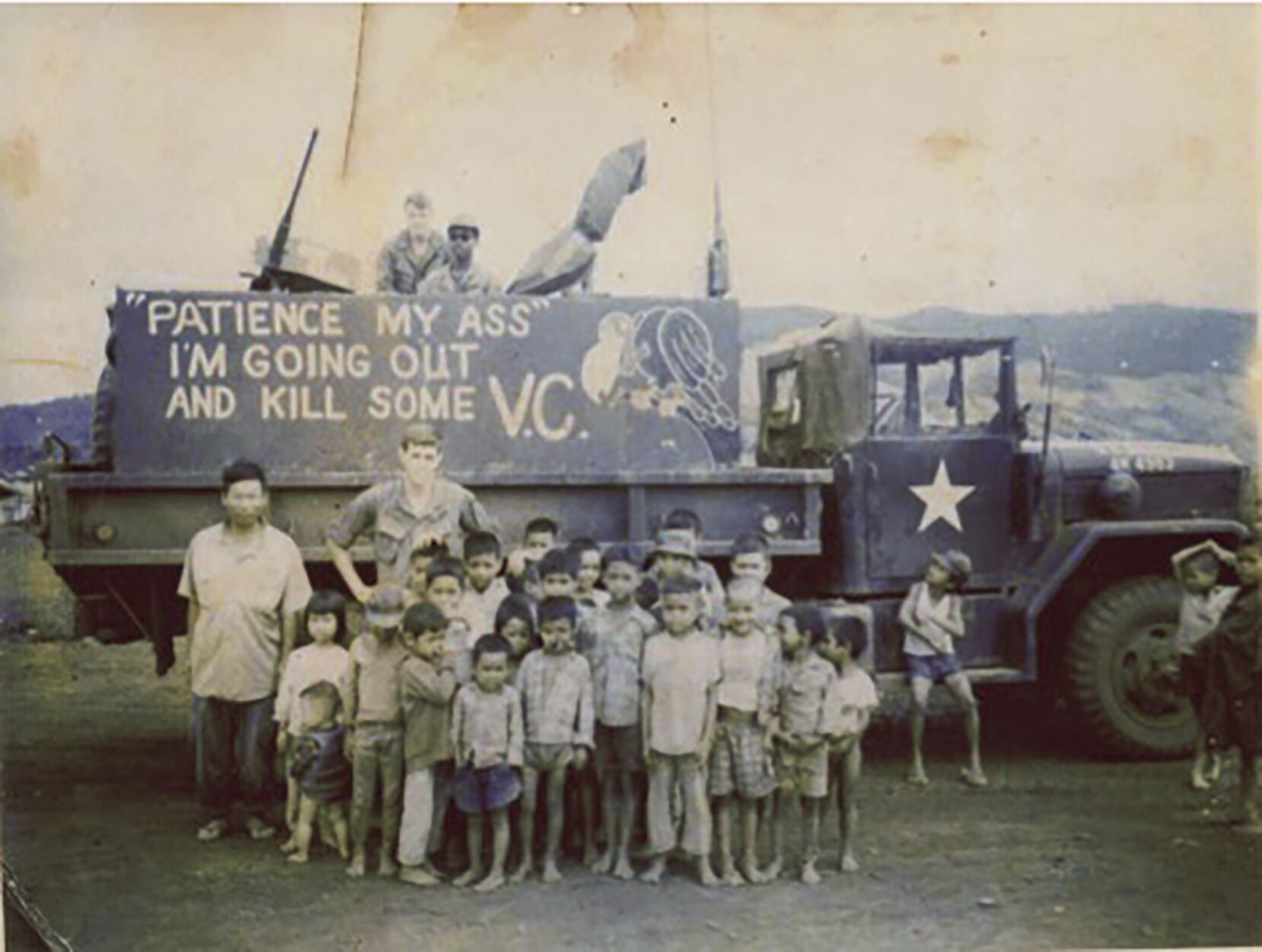Lostine woman has spent her life horsing around
Published 10:01 am Wednesday, January 8, 2014

- Lesley Neuman trained more than 300 wild mustangs for the Bureau of Land Managements adoption program and 20 for herself. She still keeps five mustangs on her ranch outside of Lostine. (KATY NESBITT/WesCom News Service)
Lesley Neuman has trained wild mustangs for federal adoption program
LOSTINE – One woman’s passion for horses helped hundreds who adopted mustangs off the West’s public lands.
Lesley Neuman of Lostine teaches techniques that allow her to approach wild mustangs at clinics sponsored by the Bureau of Land Management.
Neuman was bitten by the horse bug at an early age growing up in Lodi, Calif. By the age of 12, she had her own horse and learned to ride watching others and by putting miles and miles in the saddle.
“As long as I can remember, all I wanted to do was ‘horse,'” Neuman said.
Neuman spent as much time around her horses as she could. Eventually, she acquired a mustang in a trade. Neuman later began adopting mustangs and training them to sell for trail riding. Some she kept, like 21-year-old Slick, who has the definite markings and the build of a draft horse.
“Mustangs come in all colors and characteristics,” Neuman said. “Farmers turned out draft horses in the ’30s during the Depression.”
She said many of the horses that interbred with mustangs, who already lived on the range, have remnants of Thoroughbred, Morgan and Quarter Horse.
To adopt a mustang, Neuman said, one must keep the horse for a year. If the owner wants to move to adoption, he must then fill out an application, signed by a veterinarian or horseshoer to verify that the animal has been well cared for, and submit it. The BLM will then send back a certificate of ownership.
It’s the younger horses that get adopted, she said, and those she has taken in were generally 1 to 4 years old. In all, she estimated she’s adopted at least 20 mustangs. She now owns five and a “store-bought” mule.
She said after acquiring her first mustang, she became familiar with a short-term holding facility outside of Reno, Nev., where adopted horses are freeze-branded and given a round of shots before they are sent home with their new owner. If they aren’t adopted from the facility, they are shipped to another site and sometimes to long-term holding facilities in the Midwest.
She said mustangs need 6-foot fences to hold them.
“They are wild animals,” Neuman said. “Just because they are horses doesn’t mean you can go up and kiss them.”
With patience and determination, Neuman became accomplished at “gentling” the wild horses she adopted. After attending several BLM adoptions, she eventually spoke with a public relations official about demonstrating her skills for others who want to adopt.
“They are scared in a pen. You can’t touch them right away, they are like a deer,” Neuman said.
She said to train wild horses you need to let them know the human is in charge and to stay out of his space. After some time, the horse will recognize the human as the safe place in the arena and allow him to touch his muzzle with the back of his hand.
“You have to read them and give them a sense that it’s OK,” Neuman said. “Horses don’t miss a beat. You need to be really aware when they try to connect. They do want to get with you and find out what you are. That’s why it works.”
She said every horse is different. Sometimes she knows just by looking what she has to be ready to do – whether to back away from it or change posture.
“I will walk around the arena, kick dirt to get them to go, or point a finger to get them to move,” she said. “It’s a neat thing to have that animal let you touch him. It’s amazing how a wild animal can connect after such a short amount of exposure.”
After retiring from the State of California, Neuman said she went looking for her next home. She found her piece of paradise in a 320-acre parcel in the “bellybutton” of the Wallowa Mid-Valley. At the end of a dirt trail she had a ranch house built and put in a mile of rock road. She lives off the grid, powering the house with solar panels and heating it with wood. Her cook stove and hot water are powered by propane and she has a generator as a backup for gloomy days.
“When I came here I felt at home,” she said.
For a while the BLM paid for Neuman to travel to holding facilities to share her techniques. She’s been all over the West, the Southeast and even Australia.
“I worked with 300 or more horses from two a day to as many as 10,” she said.
Now there is no money to pay for her demonstrations. In recent years the BLM has also taken away 50 herd management areas due to drought, to make room for cattle grazing, in areas of wildfire and drought, she said.





